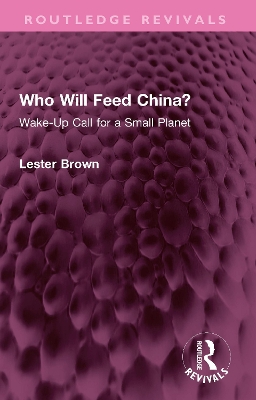Routledge Revivals
1 total work
Originally published in 1995, but with enduring relevance in a time of global population growth and food insecurity, when it was first published, this book attracted much global attention, and criticism from Beijing. It argued that even as water becomes scarcer in a land where 80% of the grain crop is irrigated, as per-acre yield gains are erased by the loss of agricultural land to industrialization, and as food production stagnates, China still increases its population by the equivalent of a new Beijing each year. This book predicts that in an integrated world economy, China’s rising food prices will become the world’s rising food prices. China’s land scarcity will come everyone’s land scarcity and water scarcity in China will affect the entire world. China’s dependence on massive imports, like the collapse of the world’s fisheries, will be a wake-up call that we are colliding with the earth’s capacity to feed us. Over time, Janet Larsen argued, China’s leaders came to ‘acknowledge how Who Will Feed China? changed their thinking..’ As China’s wealth increases, so do the dietary demands of its population. The increasing middle classes demand more grain-intensive meat and farmed fish. The issue of who will feed China has not gone away.
